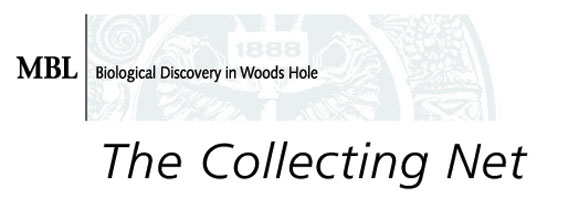| |

Spring 2006, Vol. 2, No. 1 | Index
Chris Neill
Associate Scientist, The Ecosystems Center
Chris Neill recognizes the importance of making science understandable to the public. For the last 12 years, Chris has written a monthly birding column for The Falmouth Enterprise. The column grew out of a letter he submitted to the paper about birds he observed while conducting fieldwork in Brazil. The same birds passed through Cape Cod in the summer months. “That connection was interesting to me,” he says. In Brazil, Chris sees landscapes dramatically altered by deforestation. Using birds as his “hook,” Chris wrote about how the loss of habitat through deforestation thousands of miles away could impact the birds people see on Cape Cod. “Instead of being a column just about birds, it is much more interesting to me to use birds as a way to get readers to think about larger environmental issues,” he says.
Chris has written about everything from the language of parrots and sensory perception in barn owls—topics of past MBL Friday Evening Lectures—to the use of isotopes to better understand bird migration. Over the last two years, his columns have focused on bigger environmental issues including land preservation and the proposed wind farm in Nantucket Sound. Throughout, Chris has strived to convey science in a lighthearted, accessible way. “I think it’s important to explain why environmental science is important,” he says, “and telling stories about local birds and local environmental issues is one way to do that.”
In addition to his work for the Enterprise, Chris is a board member and a member of the science advisory committee for the Association to Preserve Cape Cod, a nonprofit organization that focuses on land protection, managing development, and water quality protection. He is also an at-large member of FACES (Falmouth Associations Concerned with Estuaries and Salt Ponds) and has been involved in the past with Falmouth’s land trust, the 300 Committee.
"top" width="10"> |
|
|
Jane Tucker
Research Assistant, The Ecosystems Center
Jane Tucker is helping to shape the future of Falmouth's coastline. As a member of the Town's Coastal Resources Working Group, an all-volunteer advisory group appointed by the Falmouth Board of Selectmen, Jane and her colleagues are charged with exploring reasons for the current condition of the Town’s coastal zone, developing future scenarios, and providing community outreach and recommendations concerning coastal management.
Formed in 2000, the group’s first task was to come up with a long-term “vision” for Falmouth’s south shore. According to Jane, it took the Working Group, which is made up of scientists and non-scientists, almost a year just to “get on the same page.” “There were four coastal geologists on the committee, so the rest of us had to get up to speed,” she says.
In 2003, the Working Group submitted its final report to the Town. The report indicated that nearly half of Falmouth’s south shore coastline contains sea walls, groins, or other hard structures constructed to prevent erosion, however natural coastal sediment transport processes have been badly damaged by this “armoring.” In fact, the Working Group found that erosion rates along the south shore have increased five to tenfold over the last 30 years, and attributes this increase to the effects of armoring. The loss of sediment sources combined with sea level rise suggests a bleak future for Falmouth’s beaches. The report suggested a number of recommendations for the Town, such as letting natural processes operate and working towards removing armoring on Town parcels to free natural sediment sources. The report also recommended that the Town acquire and protect coastal open space, particularly in key sediment supply areas.
“It will be a real struggle to get the Town to implement these recommendations,” Jane says. “It is going to be a very hard sell—people don’t want to lose their coastal property.
“The suggestion that the town acquire coastal property sounds untenable to most people.” Jane notes, however, that it’s critical that Falmouth think big and long-term. “ It will take time to get people thinking in a different way,” she says. “That’s our biggest challenge.”
Since the report’s release, Jane and other members of the Working Group have disseminated the report through community outreach activities. “We've held meetings with the Beach Committee and the Waterways Committee, as well as public meetings at the Falmouth Library and with some neighborhood associations,” Jane explains. The Working Group hopes to schedule another public meeting this summer.
The Working Group is now focusing its efforts on understanding the condition of sediment processes along the Buzzards Bay shore of Falmouth. They expect to submit a similar type of report to the Town by the end of the year.
Copies of the Working Group’s report on “The Future of Falmouth’s South Shore” can be downloaded from the Town of Falmouth’s website.
|
The New Collecting Net is an employee newsletter published by the Communications Office. Comments and suggestions are welcome. Call (508) 289-7423 or e-mail us at

|